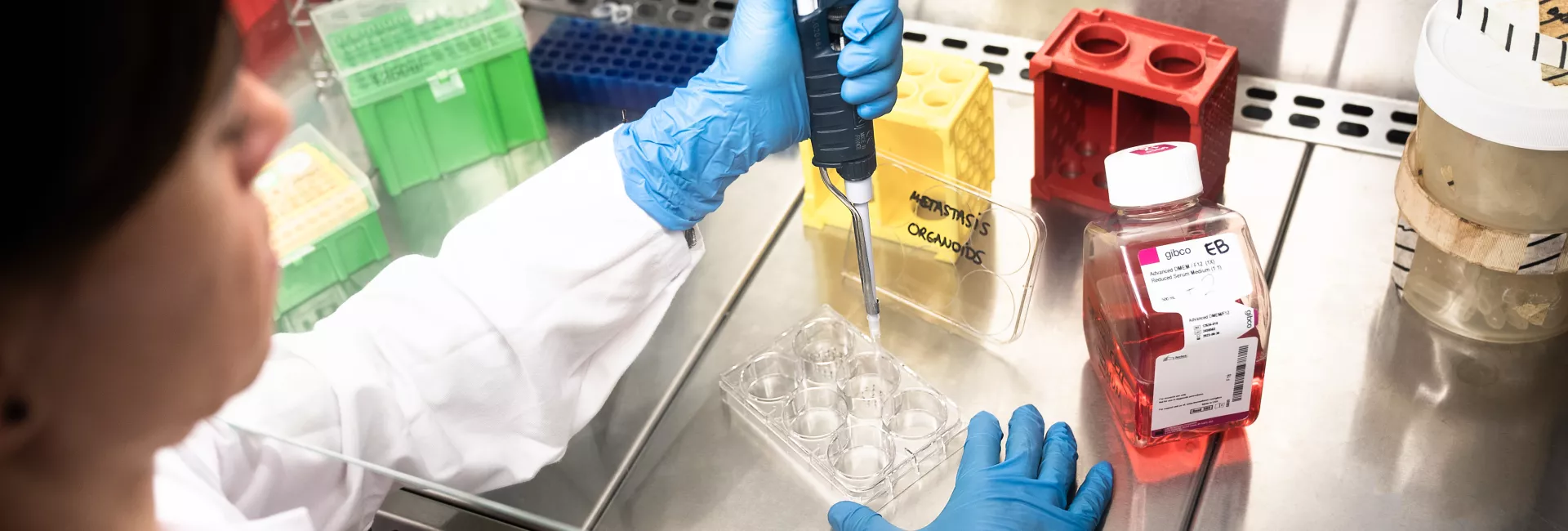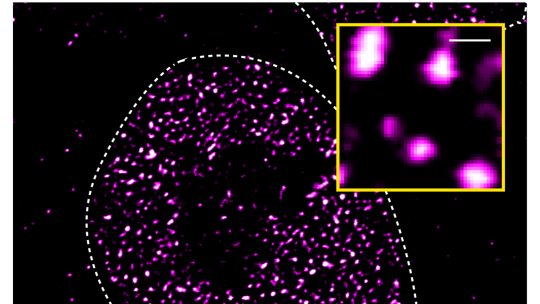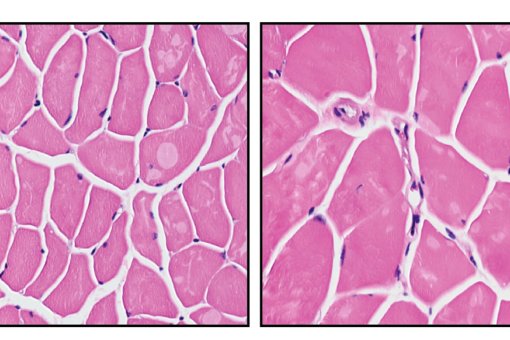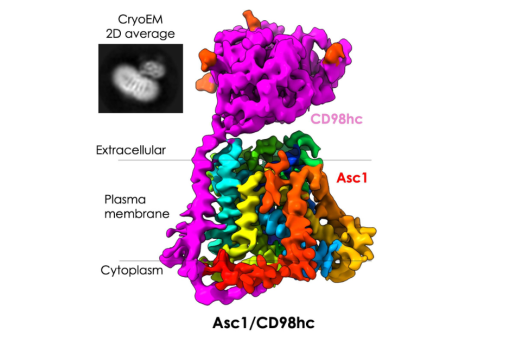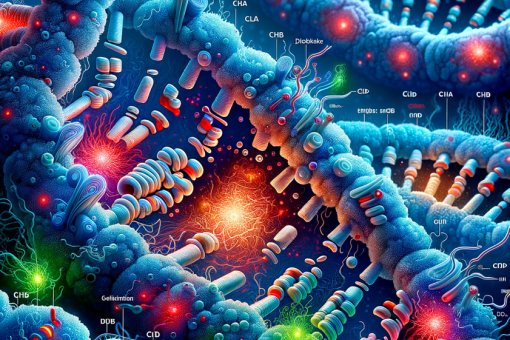Images
Participants
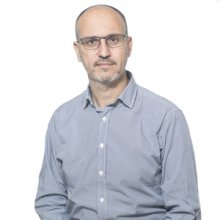




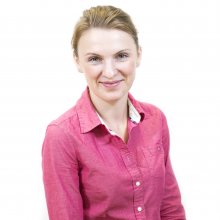




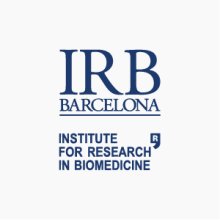

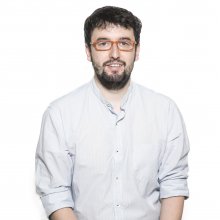





Contact

- Many of the most potent human oncoproteins belong to a class of proteins called transcription factors, but designing small molecule drugs that target these is a major challenge.
- An international team of researchers from the Institute for Research in Biomedicine (IRB Barcelona), the Max Planck Institute for Molecular Genetics (MPIMG), BC Cancer (University of British Columbia), and other institutions has discovered a potential way to target the androgen receptor—the most prominent oncogenic transcription factor in prostate cancer—based on its propensity to form droplets, also known as condensates.
- The results described in this publication set the basis for the foundation of Nuage Therapeutics, a spinoff of IRB Barcelona and ICREA.
- The findings are published in Nature Structural & Molecular Biology.
Transcription factors play essential roles in turning the genetic information encoded in genes in all cells and organisms into proteins. These regulatory proteins bind DNA, turn genes on or off, and regulate the rate at which DNA is transcribed into mRNA, which is needed for protein synthesis. Given the central role of transcription factors in transcriptional control, many diseases can be traced back to the dysregulation of these factors. Inhibiting the activity of these transcription factors, especially in cancer, offers therapeutic potential; however, many have a trick up their sleeve. Their activation domains are intrinsically disordered, meaning that the chains of amino acids that make up the domain lack a clear 3D structure, thus making it virtually impossible to design drugs that bind to these sites.
A research team led by researchers at IRB Barcelona Dr. Xavier Salvatella (ICREA research professor) and Dr. Antoni Riera (Professor at the University of Barcelona); Dr. Denes Hnisz, at the Max Planck Institute for Molecular Genetics; and Dr. Marianne D. Sadar, at BC Cancer (University of British Columbia, Canada), has studied the tendency of intrinsically disordered proteins to form so-called biomolecular condensates. They have found that the mechanisms involved in condensation could be exploited to inhibit androgen receptor activity in prostate cancer.
"The rationale we have followed to optimise an androgen receptor inhibitor could be exploited to inhibit other transcription factors, thus opening up new opportunities to address unmet medical needs," says Dr. Salvatella.
Cellular droplets-a new approach to targeting transcription factors
Under a microscope, biomolecular condensates resemble proteinaceous blobs floating on water. The condensates form in a process called liquid-liquid phase separation, similar to how oil droplets coalesce when mixed in water. "We had previously observed that the androgen receptor forms biomolecular condensates when even a tiny amount of an activating molecule, such as testosterone, is added to cells," says Dr. Shaon Basu, now a computational biologist at the Charité in Berlin and one of the study's first authors, together with Dr. Paula Martínez-Cristobal, at IRB Barcelona. The scientists hypothesised that there could be a link between the activation of the androgen receptor and its propensity to form droplets. Working with biophysicist Dr. Salvatella, they used nuclear magnetic resonance techniques to identify several short pieces within the intrinsically disordered activation domain that are essential for phase separation.
Moreover, the same short pieces also turned out to be necessary for the gene-activating function of the receptor. "We discovered short sequences in the activation domain that tend to be disordered when the protein is soluble and, surprisingly, these regions seem to form more stable helices when the protein is concentrated in condensates," explains Dr. Hnisz. The short helices create transient binding pockets that can be targeted with inhibitors when the receptor is in condensates.
Improving compounds for the treatment of prostate cancer
Working with the labs of Dr. Antoni Riera and Dr. Marianne Sadar, the team then improved an experimental small molecule inhibitor to fit almost perfectly into the transient binding pocket. They then tested whether the changes introduced increased efficacy in an aggressive, late-stage form of prostate cancer in cell and mouse models. "We modified the chemical features of the compound to match the features of androgen receptor condensation, resulting in a tenfold increase in the potency of the molecule in castration-resistant prostate cancer," says Dr. Paula Martínez-Cristobal, also first author of the study. “This is really important because castration-resistant prostate cancer is an extremely aggressive cancer that is resistant to current first-line therapeutics,” she adds.
However, the authors agree that more research is needed before these findings can be translated into new and safe therapeutics. The team hopes that the basic mechanisms they have discovered may be applicable to other transcription factors, thereby paving the way to target these important molecules in many different diseases. "We believe that the idea that there are certain sequences within intrinsically disordered protein domains that adopt a transiently stable structure in condensates is universal and likely to be generalizable to transcription factors," concludes Dr. Hnisz.
The biotech company Nuage Therapeutics
Founded by Drs. Xavier Salvatella, Mateusz Biesaga, Denes Hnisz and Judit Anido, the biotech company Nuage Therapeutics develops drug screening assays to target intrinsically disordered proteins that undergo biomolecular condensation, thus providing new treatments for diseases currently considered difficult to treat.
The findings now published in Nature Structural & Molecular Biology laid the groundwork for the foundation of this company in September 2021. The potential of its science led to a €12M Seed financing round in June 2023.
Related article:
Rational optimization of a transcription factor activation domain inhibitor
Shaon Basu#, Paula Martínez-Cristóbal#, Mireia Pesarrodona, Marta Frigolé-Vivas, Michael Lewis, Elzbieta Szulc, C. Adriana Bañuelos, Carolina Sánchez-Zarzalejo, Stasė Bielskutė, Jiaqi Zhu, Karina Pombo-García, Carla Garcia-Cabau, Levente Zodi, Hannes Dockx, Jordann Smak, Harpreet Kaur, Cristina Batlle, Borja Mateos, Mateusz Biesaga, Albert Escobedo, Lídia Bardia, Xavier Verdaguer, Alessandro Ruffoni, Nasrin R. Mawji, Jun Wang, Jon K. Obst, Teresa Tam, Isabelle Brun-Heath, Salvador Ventura, David Meierhofer, Jesús García, Paul Robustelli, Travis H. Stracker, Marianne D. Sadar*, Antoni Riera*, Denes Hnisz*, Xavier Salvatella*
Nature Structural & Molecular Biology (2023) DOI: 10.1038/s41594-023-01159-5
About IRB Barcelona
The Institute for Research in Biomedicine (IRB Barcelona) pursues a society free of disease. To this end, it conducts multidisciplinary research of excellence to cure cancer and other diseases linked to ageing. It establishes technology transfer agreements with the pharmaceutical industry and major hospitals to bring research results closer to society, and organises a range of science outreach activities to engage the public in an open dialogue. IRB Barcelona is an international centre that hosts 400 researchers and more than 30 nationalities. Recognised as a Severo Ochoa Centre of Excellence since 2011, IRB Barcelona is a CERCA centre and member of the Barcelona Institute of Science and Technology (BIST).
